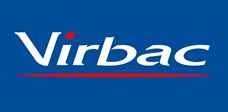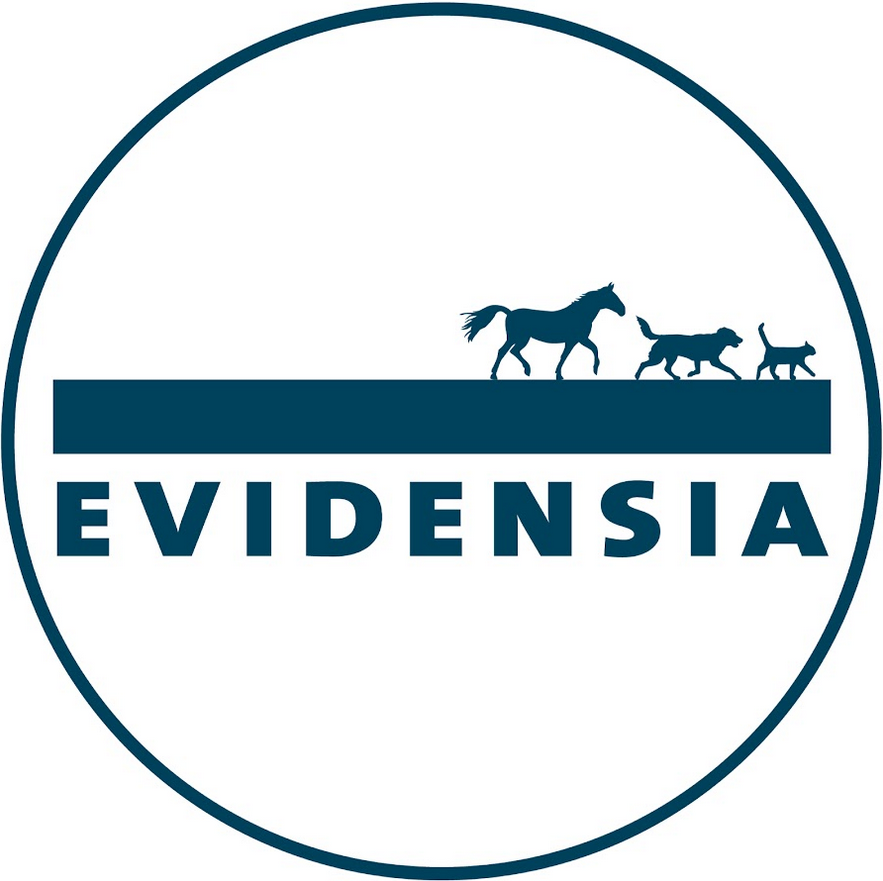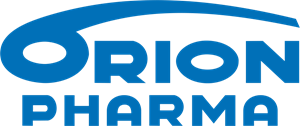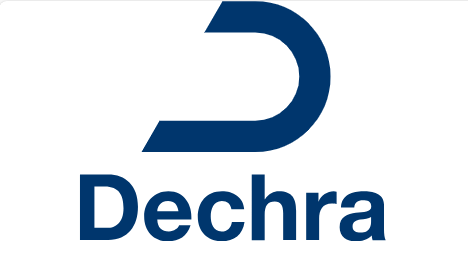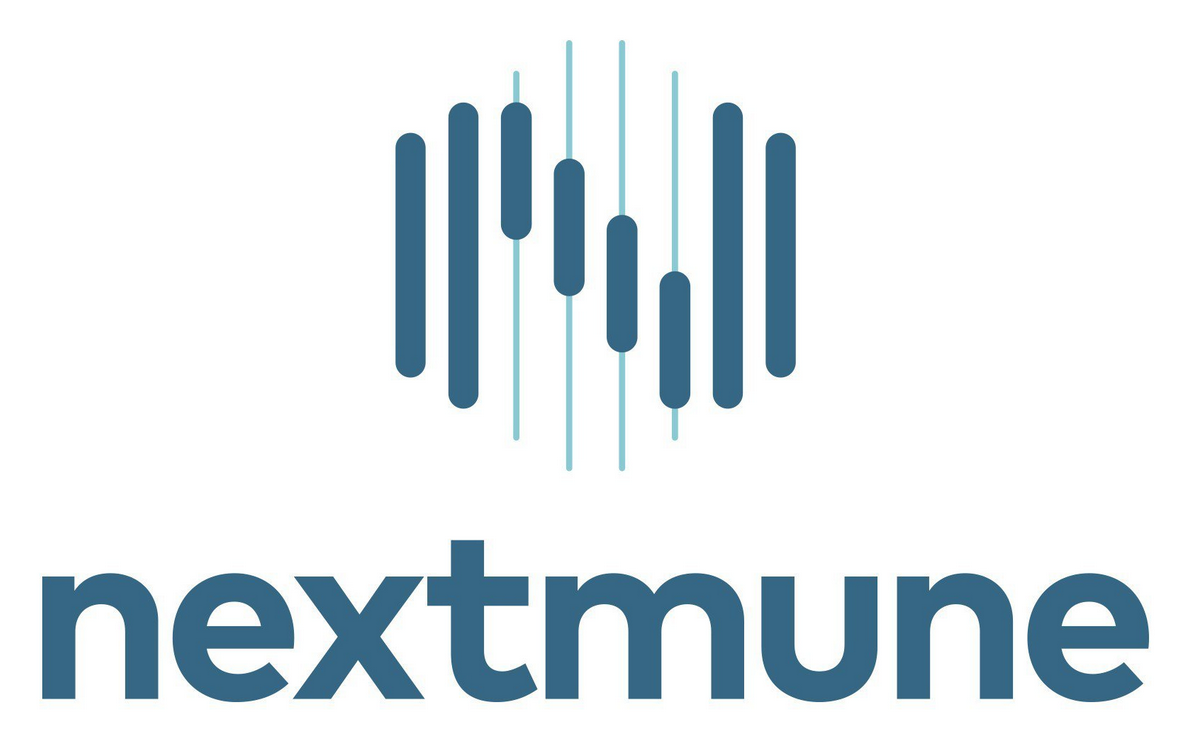Propomitor vet.
Active substance
ATC code
Species
Dogs and cats.
Indications
| - | General anaesthesia for brief procedures lasting up to five minutes. |
| - | Induction and maintenance of general anaesthesia by administration of incremental doses to effect or as a constant rate infusion (CRI). |
| - | Induction of general anaesthesia, where maintenance is provided by inhalation anaesthetic agents. |
Dose to be administered and administration route
Intravenous use.
The veterinary medicinal product is a sterile product for intravenous use. Shake gently prior to use.
Dose requirements can vary significantly between individual animals and are influenced by a range of factors (please refer to section 4.5 Special precautions for use in animals, and section 4.8 Interaction with other medicinal products and other forms of interaction). In particular, the use of pre-anaesthetic drugs (premedication) may markedly reduce propofol requirements dependent on the type and dose of preanaesthetic drugs used.
The dose to be administered should be estimated based on average dose requirements in preparation for anaesthesia. The actual dose requirements of an individual animal may be significantly lower or higher than the average dose.
Induction
The induction dose of the veterinary medicinal product presented in the table below is based on data taken from controlled laboratory and field studies and is the average amount of drug required for dogs or cats to be successfully induced for anaesthesia. The actual dose administered must be based on the individual response of each animal.
|
DOGS |
Guide dose mg/kg bodyweight |
Dose volume ml/kg bodyweight |
|
Unpremedicated |
6.5 |
0.65 |
|
Premedicated* alpha-2 agonist acepromazine-based |
3.0 4.5 |
0.30 0.45 |
|
CATS |
||
|
Unpremedicated |
8.0 |
0.8 |
|
Premedicated* alpha-2 agonist acepromazine-based |
2.0 6.0 |
0.2 0.6 |
* Induction doses significantly below the average dose may be effective after premedication with an alpha-2 adrenoceptor based protocol in some animals.
When propofol is used in combination with e.g. ketamine, fentanyl or benzodiazepines for induction of anaesthesia (so called co-induction), the total dose of propofol can be further reduced.
The dosing syringe should be prepared based on the dose volume of veterinary medicinal product shown above, calculated based on bodyweight. The dose should be administered slowly to limit incidence and duration of apnoea and administration should continue until the clinician is satisfied that the depth of anaesthesia is sufficient for endotracheal intubation or the planned procedure. As a guide the veterinary medicinal product should be administered over a period of 20–60 seconds.
Maintenance
Repeat bolus injections
Where anaesthesia is maintained by incremental injections of the veterinary medicinal product, the dose rate and duration of effect will vary between animals. The incremental dose required to maintain anaesthesia is typically lower in premedicated animals compared with unpremedicated animals.
An incremental dose of approximately 1 mg/kg (0.1 ml/kg) in dogs and 2 mg/kg (0.2 ml/kg) in cats can be administered when anaesthesia becomes too light. This dose can be repeated as required to maintain an appropriate depth of anaesthesia, allowing 20–30 seconds between each dose to assess the effect. Each incremental dose should be administered slowly to effect.
Constant rate infusion
When anaesthesia is maintained by a constant rate infusion (CRI) of propofol, the dose is 0.2–0.4 mg/kg/min in dogs. The actual dose administered must be based on the individual response of each animal and may be increased up to 0.6 mg/kg/min for short periods. In cats, the maintenance dose is 0.1–0.3 mg/kg/min, and should be adapted to the individual response. CRI anaesthesia lasting up to 2 hours with the dose 0.4 mg/kg/min in dogs and 0.2 mg/kg/min in cats has been reported to be well tolerated. In addition, infusion rate may be increased or decreased by 0.025– 0.1 mg/kg/min increments in dogs, or 0.01–0.025 mg/kg/min in cats at 5–10 min intervals to adapt the anaesthetic plane.
Continuous and prolonged exposure (greater than 30 minutes) may lead to slower recovery, especially in cats.
Maintenance of anaesthesia by inhalation agents
Where inhalation agents are used to maintain general anaesthesia, it may be necessary to use a higher initial concentration of the inhalation anaesthetic than is normally the case following induction with barbiturate agents.
Please refer also to section 4.5 Special precaution for use in animals.
Adverse reactions
|
Very common (>1 animal / 10 animals treated): |
Apnoea |
|
Common (1 to 10 animals / 100 animals treated): |
Excitation Arrhythmia, Bradycardia, Hypotension, Hypertensiona Emesis, Hypersalivation, Retching Paddling, Myoclonus, Nystagmus, Opisthotonus, Recovery prolongedb Sneezing Face/nose rubbing |
|
Uncommon (1 to 10 animals / 1 000 animals treated): |
Injection site painc Hyperglycemia |
aIf propofol is used without premedication as a sole agent in induction of anaesthesia, a short transient increase of arterial blood pressure can be observed.
bSlow recovery
cAfter intravenous administration
Cats
|
Very common (>1 animal / 10 animals treated): |
Apnoea |
|
Common (1 to 10 animals / 100 animals treated): |
Excitation Arrhythmia, Bradycardia, Hypotension Emesis, Hypersalivation, Retching Paddling, Myoclonus, Nystagmus, Opisthotonos, Recovery prolonged Sneezing Face/nose rubbing |
|
Uncommon (1 to 10 animals / 1 000 animals treated): |
Injection site paina Diarrhoeab Facial oedemab,c Hyperglycemia, Heinz body anaemiab Anorexiab |
aAfter intravenous administartion.
bIn cats undergoing repeated anaesthesia. Limiting repeated anaesthesia to intervals of more than 48 hours will reduce the likelihood. The effects are generally transient and resolve on their own.
cMild facial oedema.
Reporting adverse events is important. It allows continuous safety monitoring of a veterinary medicinal product. Reports should be sent, preferably via a veterinarian, to either the marketing authorisation holder or its local representative or the national competent authority via the national reporting system. See also section 16 of the package leaflet for contact details.
Dispensing
POM-V - Prescription Only Medicine – VeterinarianReferences
SUMMARY OF PRODUCT CHARACTERISTICS
1. NAME OF THE VETERINARY MEDICINAL PRODUCT
Propomitor 10 mg/ml emulsion for injection/infusion for dogs and cats
2. QUALITATIVE AND QUANTITATIVE COMPOSITION
Each ml contains:
Active substance:
Propofol 10 mg
For the full list of excipients, see section 6.1.
3. PHARMACEUTICAL FORM
Emulsion for injection/infusion.
White or almost white, homogenous emulsion.
4. CLINICAL PARTICULARS
4.1 Target species
Dogs and cats
4.2 Indications for use, specifying the target species
- General anaesthesia for brief procedures lasting up to five minutes.
- Induction and maintenance of general anaesthesia by administration of incremental doses to effect or as a constant rate infusion (CRI).
- Induction of general anaesthesia, where maintenance is provided by inhalation anaesthetic agents.
4.3 Contraindications
Do not use in cases of hypersensitivity to the active substance or to any of the excipients.
4.4 Special warnings for each target species
The product is a stable emulsion. Prior to use, the product should be inspected visually for absence of visible droplets or extraneous foreign particles or phase separation, and discarded if present. Do not use if evidence of phase separation remains after gentle shaking.
If the product is injected too slowly an adequate plane of anaesthesia may not be achieved due to failure to reach the appropriate threshold of pharmacological activity.
4.5 Special precautions for use
Special precautions for use in animals
During induction of anaesthesia, mild hypotension and transient apnoea may occur. When using the veterinary medicinal product, facilities for the maintenance of a patent airway, artificial ventilation and oxygen enrichment must be available. Following induction of anaesthesia, the use of an endotracheal tube is recommended. Increased levels of carbon dioxide in blood have been reported with increased duration of propofol anaesthesia. It is advisable to administer supplemental oxygen during maintenance of anaesthesia. In addition the need for assisted ventilation should be considered during prolonged anaesthesia.
If the product is injected too rapidly, cardiopulmonary depression may occur (apnoea, bradycardia, hypotension).
As with other intravenous anaesthetics, caution should be exercised in dogs and cats with cardiac, respiratory, renal or hepatic impairment, or in hypovolaemic or debilitated animals.
Propofol may increase blood glucose metabolism and insulin secretion in healthy dogs. In the absence of safety data in diabetic animals, use only after a benefit/risk assessment by the veterinarian.
Care should be taken when administering the product to patients with hypoproteinaemia, hyperlipidaemia or very thin animals since these animals may be more susceptible to adverse effects.
The safety of the product has not been established in dogs or cats younger than 4 months and should be used in these animals only according to the risk/benefit assessment by the responsible veterinarian.
It has been reported that the clearance of propofol is slower in overweight/obese animals and dogs over 8 years of age. Extra care should be taken when administering the product to these animals; in particular, a lower dose of propofol may be adequate for induction and maintenance in such cases. Sighthounds have been reported to show a slower clearance of propofol and may have a slightly longer duration of recovery from anaesthesia compared to other breeds of dog.
Propofol does not have analgesic properties, therefore supplementary analgesic agents should be provided in cases where procedures are anticipated to be painful.
When propofol is used concomitantly with opioids, an anticholinergic agent (e.g.
atropine) may be used in cases of bradycardia according to the benefit/risk assessment by the responsible veterinarian. See section 4.8.
Use aseptic techniques when administering the product.
Special precautions to be taken by the person administering the veterinary medicinal product to animals
Propofol is a potent general anaesthetic drug and particular care should be taken to avoid accidental self-injection. A guarded needle should preferably be used until the moment of injection.
In case of accidental self-injection, seek medical advice immediately and show the package leaflet or the label to the physician, but DO NOT DRIVE as sedation may occur.
This product may cause hypersensitivity (allergy) reactions in those that are already sensitised to propofol, soya or egg. People with known hypersensitivity to these substances should avoid contact with the veterinary medicinal product.
Avoid contact with the skin and eyes as the product can cause irritation.
Wash off splashes from skin or eyes immediately with plenty of fresh water. Seek medical advice if irritation persists.
To the physician:
Do not leave the patient unattended. Maintain airways and give symptomatic and supportive treatment.
4.6 Adverse reactions (frequency and seriousness)
Very common adverse reactions: apnoea.
Common adverse reactions: bradycardia, arrhythmia, mild hypotension, signs of excitation (paddling of limbs, myoclonus, nystagmus, opisthotonus), emesis, retching, hypersalivation, sneezing, face/nose rubbing and slow recovery. If propofol is used without premedication as a sole agent in induction of anaesthesia, a short transient increase of arterial blood pressure can be observed in dogs.
Uncommon adverse reactions: increase of blood glucose , pain on injection site after IV administration.
In cats undergoing repeated anaesthesia, Heinz body production, anorexia, diarrhoea and mild facial oedema have been detected. Recovery may also become prolonged. Limiting repeated anaesthesia to intervals of more than 48 hours will reduce the likelihood.
The effects are generally transient and resolve on their own.
The frequency of adverse reactions is defined using the following convention:
- very common (more than 1 in 10 animals treated displaying adverse reaction(s))
- common (more than 1 but less than 10 animals in 100 animals treated)
- uncommon (more than 1 but less than 10 animals in 1,000 animals treated)
- rare (more than 1 but less than 10 animals in 10,000 animals treated)
- very rare (less than 1 animal in 10,000 animals treated, including isolated reports).
4.7 Use during pregnancy, lactation or lay
The safety of the veterinary medicinal product has not been established during pregnancy (in foetuses/neonates) and during lactation. Propofol has been safely used in dogs for the induction of anaesthesia prior to delivery of puppies by caesarean section. Propofol crosses through the placenta and the foetus blood-brain barrier, thus during the period of brain development it may adversely affect the neurological development in foetuses and neonates. Owing to the risk of neonatal death, the use of propofol for the maintenance of anaesthesia during caesarean section is not recommended.
Only use according to the benefit-risk assessment by the responsible veterinarian.
4.8 Interaction with other medicinal products and other forms of interaction
Propofol may be used in association with premedicants, e.g. atropine, glycopyrrolate,
α-2 agonists (medetomidine, dexmedetomidine), acepromazine, benzodiazepines (diazepam, midazolam); inhalational agents (e.g. halothane, isoflurane, sevoflurane, enflurane and nitrous oxide); and analgesic agents such as pethidine and buprenorphine.
The product may be administered parallel to all intravenous fluids via e.g. a Y-piece positioned near the injection site. The product can be diluted with 5% glucose infusion solution. Compatibility studies with other infusion solutions (e.g. NaCl or lactated Ringer’s solution) have not been conducted with this veterinary medicinal product.
The concurrent use of sedative or analgesic drugs is likely to reduce the dose of propofol required to induce and maintain anaesthesia. See section 4.9.
Concomitant use of propofol and opioids may cause significant respiratory depression and a profound decrease in heart rate. In cats, concurrent use of propofol and ketamine have been reported to cause apnoea more frequently than propofol and other premedicants. To reduce the risk of apnoea, propofol should be administered slowly over 20–60 seconds. See also section 4.5.
Co-administration of propofol and opioid (e.g. fentanyl, alfentanil) infusions for maintenance of general anaesthesia may result in a prolonged recovery. Cardiac arrest has been observed in dogs that received propofol followed by alfentanil.
Administration of propofol with other medicinal products that are metabolised by cytochrome P450 (isoenzyme 2B11 in the dog) such as chloramphenicol, ketoconazole and loperamide reduces propofol clearance and prolongs recovery from anaesthesia.
4.9 Amounts to be administered and administration route
The product is a sterile product for intravenous use. Shake gently prior to use.
Dose requirements can vary significantly between individual animals and are influenced by a range of factors (please refer to section 4.5 Special precautions for use in animals, and section 4.8). In particular, the use of pre-anaesthetic drugs (premedication) may markedly reduce propofol requirements dependent on the type and dose of pre-anaesthetic drugs used.
The dose to be administered should be estimated based on average dose requirements in preparation for anaesthesia. The actual dose requirements of an individual animal may be significantly lower or higher than the average dose.
Induction
The induction dose of the veterinary medicinal product presented in the table below is based on data taken from controlled laboratory and field studies and is the average amount of drug required for dogs or cats to be successfully induced for anaesthesia. The actual dose administered must be based on the individual response of each animal.
|
DOGS |
Guide dose mg/kg bodyweight |
Dose volume ml/kg bodyweight |
|
Unpremedicated |
6.5 |
0.65 |
|
Premedicated* alpha-2 agonist acepromazine-based |
3.0 4.5 |
0.30 0.45 |
|
CATS |
|
|
|
Unpremedicated |
8.0 |
0.8 |
|
Premedicated* alpha-2 agonist acepromazine-based |
2.0 6.0 |
0.2 0.6 |
* Induction doses significantly below the average dose may be effective after premedication with an alpha-2 adrenoceptor based protocol in some animals.
When propofol is used in combination with e.g. ketamine, fentanyl or benzodiazepines for induction of anaesthesia (so called co-induction), the total dose of propofol can be further reduced.
The dosing syringe should be prepared based on the dose volume of product shown above, calculated based on bodyweight. The dose should be administered slowly to limit incidence and duration of apnoea and administration should continue until the clinician is satisfied that the depth of anaesthesia is sufficient for endotracheal intubation or the planned procedure. As a guide the product should be administered over a period of 20–60 seconds.
Maintenance
Repeat bolus injections
Where anaesthesia is maintained by incremental injections of the product, the dose rate and duration of effect will vary between animals. The incremental dose required to maintain anaesthesia is typically lower in premedicated animals compared with unpremedicated animals.
An incremental dose of approximately 1 mg/kg (0.1 ml/kg) in dogs and 2 mg/kg
(0.2 ml/kg) in cats can be administered when anaesthesia becomes too light. This dose can be repeated as required to maintain an appropriate depth of anaesthesia, allowing 20–30 seconds between each dose to assess the effect. Each incremental dose should be administered slowly to effect.
Constant rate infusion
When anaesthesia is maintained by a constant rate infusion (CRI) of propofol, the dose is 0.2–0.4 mg/kg/min in dogs. The actual dose administered must be based on the individual response of each animal and may be increased up to 0.6 mg/kg/min for short periods. In cats, the maintenance dose is 0.1–0.3 mg/kg/min, and should be adapted to the individual response. CRI anaesthesia lasting up to 2 hours with the dose 0.4 mg/kg/min in dogs and 0.2 mg/kg/min in cats has been reported to be well tolerated. In addition, infusion rate may be increased or decreased by 0.025– 0.1 mg/kg/min increments in dogs, or 0.01–0.025 mg/kg/min in cats at 5–10 min intervals to adapt the anaesthetic plane.
Continuous and prolonged exposure (greater than 30 minutes) may lead to slower recovery, especially in cats.
Maintenance of anaesthesia by inhalation agents
Where inhalation agents are used to maintain general anaesthesia, it may be necessary to use a higher initial concentration of the inhalation anaesthetic than is normally the case following induction with barbiturate agents.
Please refer also to section 4.5 Special precaution for use in animals.
4.10 Overdose (symptoms, emergency procedures, antidotes), if necessary
Accidental overdose is likely to cause cardio-respiratory depression. In such cases, ensure the airways are open and initiate assisted or controlled ventilation with oxygen, administering pressor agents and intravenous fluids to support cardiovascular function. In dogs, bolus doses greater than 10 mg/kg may cause cyanosis. Mydriasis may also be observed. Cyanosis and mydriasis serve as an indication that supplemental oxygen is necessary. Death has been reported at bolus doses of 19.5 mg/kg in cats and 20 mg/kg in dogs.
4.11 Withdrawal period(s) Not applicable.
5. PHARMACOLOGICAL PROPERTIES
Pharmacotherapeutic group: Anesthetics, other general anaesthetics. ATCvet code: QN01AX10.
5.1 Pharmacodynamic properties
Propofol is a short-acting, intravenous general anaesthetic, characterised by rapid onset, a short duration of anaesthesia and by rapid recovery. Propofol produces unconsciousness by depressing the central nervous system.
The depressant effects of propofol are primarily mediated through potentiation of postsynaptic GABAA receptors in the central nervous system. However, the glutaminergic and noradrenergic neurotransmitter systems are also thought to have a role in mediating the effects of propofol.
5.2 Pharmacokinetic particulars
Blood concentrations of propofol exhibit a tri-exponential decline in both dogs and cats. This is likely to reflect rapid distribution of propofol from the blood and brain to less well vascularised tissues, rapid metabolic clearance and slower redistribution from poorly vascularised tissues to blood. It is the first phase (t½, alpha approximately 10 min) that is clinically relevant, since animals awaken subsequent to the initial redistribution of propofol from the brain. The clearance of the drug is high in dogs but lower in cats, possibly due to inter-species differences in metabolism. In dogs, clearance is higher than hepatic blood flow, suggesting the presence of metabolic sites in addition to the liver. The volume of distribution is high in both dogs and cats. Propofol is highly bound to plasma protein (96-98%).
Clearance of the drug occurs through hepatic metabolism followed by renal elimination of the conjugated metabolites. A small amount is excreted in the faeces.
6. PHARMACEUTICAL PARTICULARS
6.1 List of excipients
Soya-bean oil, refined
Egg phospholipids
Glycerol
Sodium hydroxide
Water for injections
Disodium edetate
6.2 Major incompatibilities
The product can be diluted with 5% glucose infusion solution. Compatibility studies with other infusion solutions (e.g. NaCl or lactated Ringer’s solution) have not been conducted with this veterinary medicinal product.
6.3 Shelf life
Shelf life of the veterinary medicinal product as packaged for sale: 3 years
Shelf life after first opening the immediate packaging: use immediately.
6.4 Special precautions for storage
Do not freeze.
6.5 Nature and composition of immediate packaging
Type I clear glass vial (20, 50 and 100 ml) with a grey, siliconised bromobutyl rubber stopper and an aluminium crimp.
Pack sizes: 1x20 ml, 5x20 ml, 1x50 ml, 1x100 ml
Not all pack sizes may be marketed.
6.6 Special precautions for the disposal of unused veterinary medicinal product or waste materials derived from the use of such products
Any unused veterinary medicinal product or waste materials derived from such veterinary medicinal product should be disposed of in accordance with local requirements.
7. MARKETING AUTHORISATION HOLDER
Orion Corporation
Orionintie 1
FI-02200 Espoo
Finland
8. MARKETING AUTHORISATION NUMBER
Vm 06043/4006
9. DATE OF FIRST AUTHORISATION
17 March 2020
10. DATE OF REVISION OF THE TEXT
March 2020
Approved 17 March 2020
![]()
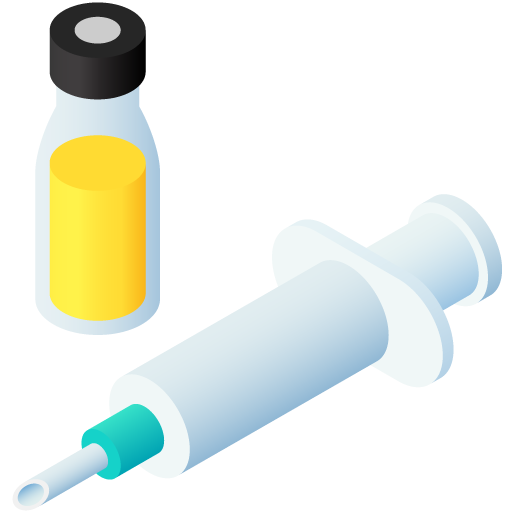
| Art. Nr. | 06043/5005 |
|---|---|
| EAN | 6432100053442 |
 TRUSTED SOURCE
TRUSTED SOURCE
